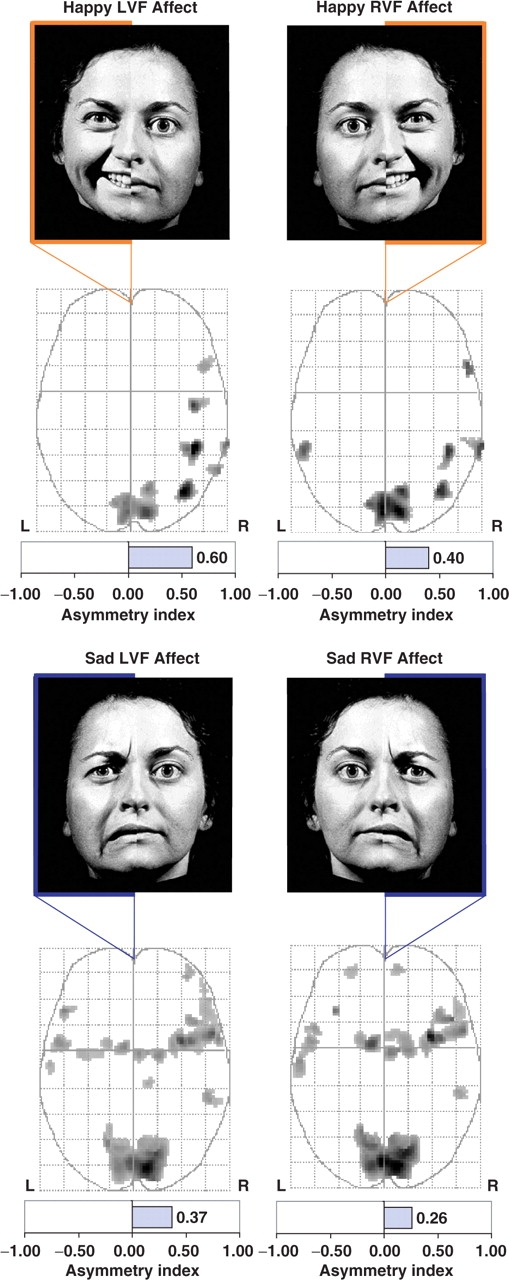Fig. 2.

One sample t-tests for chimeric stimuli. Brain activity associated with each unilateral affective stimulation condition was tested relative to resting baseline using a one sample t-test (P < 0.001, uncorrected). The top row shows happy chimera and the bottom row shows sad chimera. Relative to resting baseline, brain activity was greater in the right hemisphere during all four affective hemiface conditions regardless of affective valence (i.e. happy vs sad) or visual field of presentation [i.e. Left Visual Field (LVF) vs Right Visual Field (RVF)]. Maximum intensity projections (MIPs) in the axial plane show similar activity in the primary visual cortex and greater right hemisphere activity for all four conditions.
